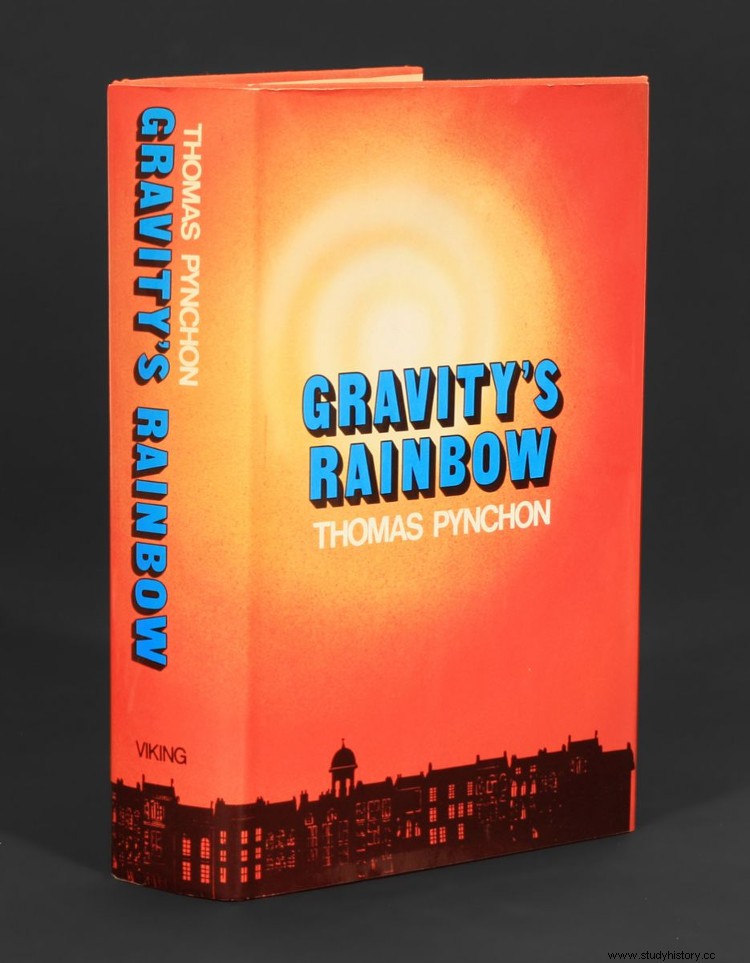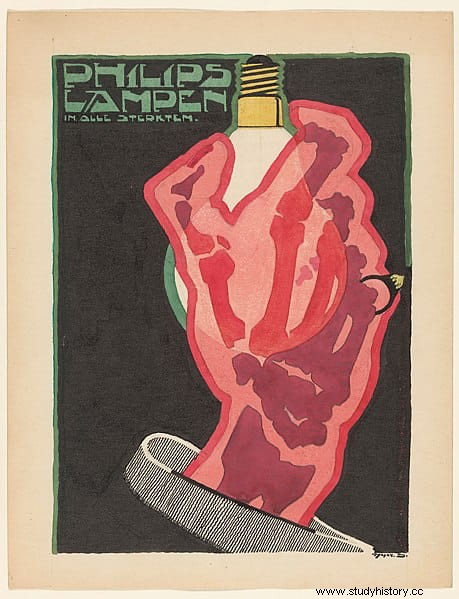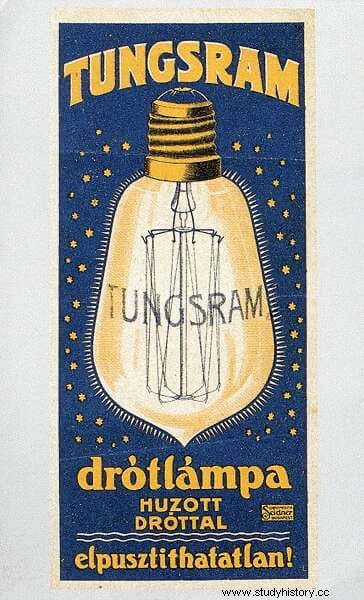Is there or was there an agreement between large companies to manufacture following the principle of planned obsolescence, so that the products have an expiration date that is not strictly necessary other than to force them to be discarded after a time and thus encourage sales? Is it just a legend? It is an idea that usually jumps from mouth to mouth without specifying but there was at least one large-scale case between 1924 and 1939:that of the main light bulb manufacturers integrated into the so-called Phoebus cartel.
The American writer Thomas Pynchon is a prestigious author who has achieved extra fame due to his refusal to appear in the media, in the purest Salinger style (he does not grant interviews and there are hardly any photos of him). In 1973 he published his third novel under the title Gravity's Rainbow (The rainbow of gravity). It is his most acclaimed work, a dense multi-thematic puzzle that portrays Europe at the end of World War II and the immediate post-war period, taking as its starting point the production by the Germans of the V2, but dealing with issues such as racism, colonialism or the entropy, among others, which Pynchon also reviews in other of his novels.

The rainbow of gravity combines reality and fiction, giving rise to a style that has been called Postmodernity and, despite winning the National Book Award in the United States, it was nominated for the Nebula Award for fantasy/science fiction and considered by Time magazine to be one of the best books in the world. 20th century in English, it was rejected for the Pulitzer Prize because the Pulitzer Prize board called it "illegible, overwritten, and obscene" (mainly due to lurid passages about drugs, pederasty and coprophilia).
The interesting thing about this work, for what concerns us, is that among the tangle of issues that parade through its pages, there is, in a secondary plot, that of planned obsolescence, alluding to that cartel that we mentioned before. This has led to difficulties in elucidating where reality ends and fiction begins, as Pynchon cited as a source a mysterious German industrialist surnamed Levy. The fact is that industry giants such as Philips, Osram and General Electric seem to have agreed, in effect, to control the production of incandescent light bulbs during the fifteen years prior to the outbreak of World War II.
In fact, that association included other smaller companies such as Associated Electrical Industries, Tungsram, Compagnie des Lampes, GE Overseas Group, International General Electric, and even the Spanish company, Lamps Z. In economics, a cartel, in case anyone is unaware, is an agreement between companies in the same sector to avoid mutual competition, regulating production, sales and prices in a given industrial field.

It all came from a commercial war that began in 1921, when the German Osram founded the Internationale Glühlampen Preisvereinigung and together with some other important European company, such as the Dutch Philips, tried to enter the North American market. General Electric, an American, responded with the same strategy, creating the International General Electric Company in Paris. Those incursions into rival territory could only be solved in two ways:free competition or through an arrangement; the latter was chosen.
The cartel was agreed on December 23, 1924 under the name of a Swiss company registered in Geneva, Phoebus S.A. Compagnie Industrielle pour le Developpement de l'Eclairage, of which all the aforementioned companies held shares in proportion to their respective sales. One of its main actions was to stop research and technological development to prevent better and longer-lasting light bulbs from being invented. Patents and market shares were also distributed, in addition to a commitment not to interfere with each other.
In this way they reduced costs and standardized the average age of the light bulbs, which was set at around a thousand hours, with fines for manufacturers whose products exceeded that amount in excess (tables indicating the penalties are kept, according to the hours of more, to pay in Swiss francs). It is also true that engineers said that a thousand hours was a considerable duration and that above that the bulbs would tend to generate more heat than light, wasting electricity.

In any case, thanks to the establishment of the cartel, prices could be increased without fear that the competition would offer more attractive ones. In addition, each manufacturer was exclusively guaranteed its territory, the national one, leaving the British colonies as the largest market for Associated Electrical Industries, Osram, Philips and Tungsram. Finally, the rest of the world was considered a market open to all. The result was that Phoebus controlled ninety percent of the world's light bulb production and sales.
Of course, the existence of the Phoebus cartel as such was kept secret, despite the fact that there were some companies that refused to submit to those limitations. This was what the North European Luma Co-op Society did, a group of Nordic companies (from Sweden, Norway and Denmark) that decided to go it alone at the end of the 1920s, marketing their light bulbs at significantly lower prices from of 1931 without the pressures and even threats received from Phoebus being of any use.
However, it was not the Scandinavians who ended the cartel -after all, it was limited to the area-, but the global context. Although in principle the pact was planned until 1955, the invasion of Poland by Hitler's Germany in 1939 unleashed the world conflict and the parameters of the economy changed radically. Phoebus was no longer able to operate on its own, sales dropped considerably and the stock accumulated light bulbs could not be removed until several years after the end of the conflict.
